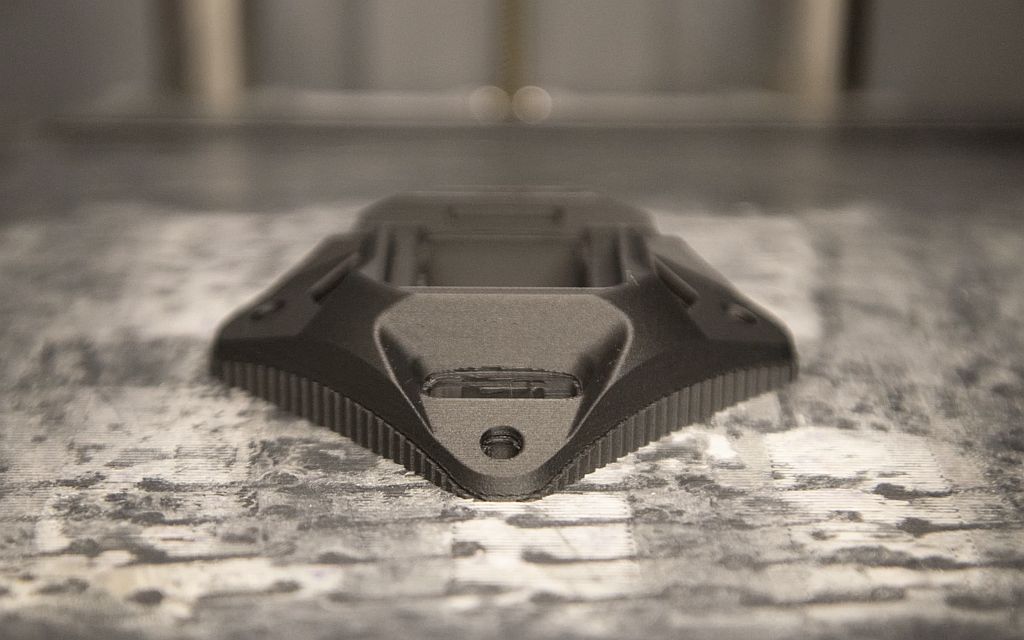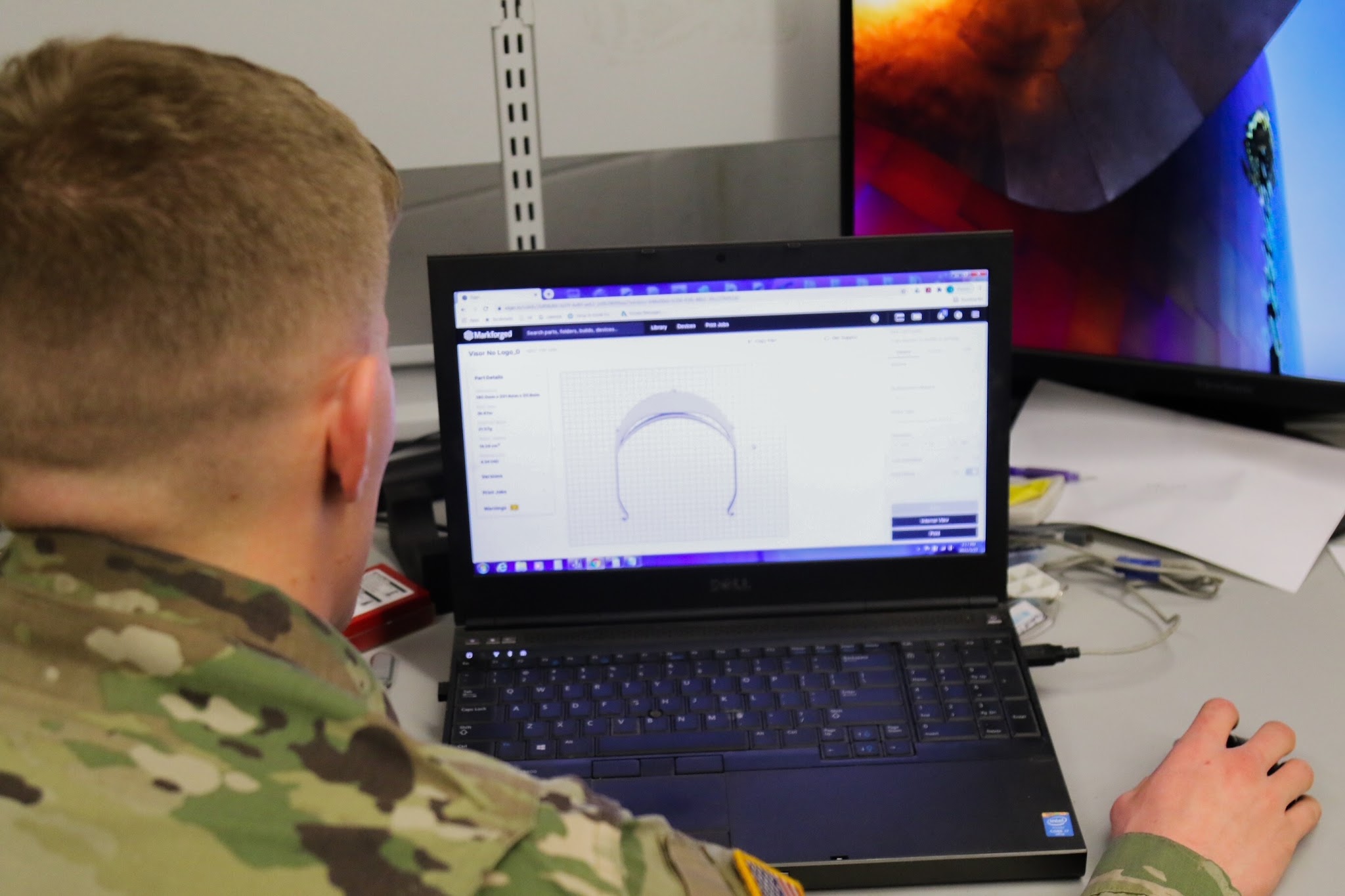In February 2023, ESD interviewed Markforged, a company known for their additive manufacturing platforms, commonly known as 3D Printers. Although not primarily targeted at the defence sector, the company has been making inroads as armed forces increasingly begin to experiment with the applications of 3D printers. These typically include rapidly delivering often highly-specific components, one-off designs, or being able to take concepts to a prototyping or service stage more quickly than using traditional manufacturing methods.
Answers to ESD’s questions were provided by Martin Krona, President EMEA at Markforged.
Q: The applications of 3D printing are fairly extensive, as I recall, Markforged has presented its printers being used to produce a helmet mount adaptor to allow mounting night vision goggles (NVGs) to a non-standard helmet, a rifle holder for a car door, and even a part of a landing gear door for an F-35. Is it fair to say that your company aims to occupy the low-volume, urgent-requirement/high complexity space in the defence sphere?
A: In addition to customising and creating new designs in the field and at any point of need, 3D printing can also help resurrect legacy parts by reverse engineering. With the help of a 3D scanner, field units can reverse engineer old or obsolete parts that need replacing by creating a file of the scan and sending it to the printer to create a new one. It is quite common that parts that need replacement in the field are old and do not necessarily exist in the market. This is especially true within the defence industry with a fleet of machines spanning over 20 years in operations.
3D printing and additive technology has come a long way since it was first used in the defence industry. Its material strength, accuracy, reliability and connectivity now make it a vital tool used by military and defence organisations around the world. The reason we often see low-volume, critical components being printed on Markforged printers in the defence industry is due to complexity of the part (that additive manufacturing can solve), and the requirement on quality and strength of the part in this particular environment.

Q: When many people think of 3D printers, they typically think of plastic components. What are the high-strength materials Markforged printers can use, and how do they compare in terms of material properties to their conventionally-manufactured counterparts?
A: Markforged printers are capable of manufacturing components from the following high-strength materials:
Onyx with carbon fibre is specifically designed for strong parts and have the same strength as 6061-T6 aluminum for use in tools, fixtures, brackets and mounts and bespoke parts.
Onyx + Aramid fibre (Kevlar) for extreme toughness and energy absorption found in applications such as end of arm tooling, supports, and wear stops.
Ultem 9085 with Carbon fibre for requirements of high performance thermoplastic parts that requires flame, smoke and toxicity characteristics such as aircraft interiors, aircraft brackets, handles, etc.
Onyx FR is a certified UL94 V-0 rated flame-retardant micro carbon fibre filled material used for applications such as weld fixturing, aerospace clips and brackets or electrical brackets and fixtures.
Metal 17-4PH stainless steel allows a variety of printed parts that are strong, robust and heat-treatable. Applications include end of arm tooling, lightweight brackets, sockets and general high-wear tooling.
Q: You have so far delivered an expeditionary-ready 3D printer to the US Marines 3rd Maintenance Battalion. What did the process of making the printer ready for expeditionary operations look like, and how did the machine fare in the field?
A: The US Marines used the Markforged X7 that prints composite material as mentioned earlier. However, they had some unique requirements and turned to Markforged for a custom version now named ‘X7 Field Edition’. Through cooperation with the US Marines, we mounted the X7 into a shock-absorbing Pelican AL3232 single lid case with custom foam and modules that can be deployed via airplane to remote areas. It includes the necessary materials and spare parts to be run for weeks. It is included in the MIL-STD-810 testing in support of a DoD Program of Record. Since its launch we have successfully deployed several dozen of these printers globally across several countries and military forces.

Q: What is it that most people miss when it comes to the potential of 3D printing?
A: The most common mistake or misconception about 3D printing is that everything can be printed. It is true that in the future as the machines and technology improve we will see more and more applications being supported. Saying that, 3D printing or additive manufacturing has some benefits that traditional manufacturing would struggle to support. For example, additive manufacturing provides more flexibility as it can use unique geometries and surface finishes. It allows the user to produce components in smaller batches and on demand. However, the process of additive manufacturing is more complex and requires a skill set more from the software engineering side rather than operator side as with traditional manufacturing. As such we often see failures not related to the printer but due to process and labour skill set.
Markforged has taken the platform approach which means we deliver not only the printer, but also the needed Software to run the machines and material in a closed environment that allows the end user to remove the complexity in a secure way. We are also trying to bridge the skill set gap with Markforged University to enable more users to become experts in how to build parts for additive manufacturing.

Credit: Markforged
Q: You also offer a design and simulation platform to design and virtually test components before printing. Aside from reducing the amount of trial and error before a part can be put to work, what are the other aims of this software platform?
A: Markforged Simulation software opens doors for engineers to save time and costs when it comes to using Additive Manufacturing to build end-use parts. The software provides the following:
Instils confidence that your 3D printed parts will have the strength required for demanding industrial applications. Powerful simulation technology optimised for additive manufacturing lets any user virtually test parts, taking the guesswork out of configuring print parameters to meet performance requirements.
Delivers parts faster by reducing design-print-test iteration cycles and rework delays. Unlike traditional simulation tools that need specialised expertise and time-consuming analysis, Simulation is integrated into Markforged’s Eiger Software and streamlined for additive manufacturing so users can test parts within their familiar ‘slice and print’ workflow.
Reduces the cost of 3D printed parts by automatically optimising the amounts of material and continuous fibre reinforcement needed. Avoid overbuilt parts and wasted material by effortlessly applying settings that optimise to meet your needs for strength, cost, and print speed. Replacing the typical 5 to 25 iterations of trial and error printing with virtual testing can save hundreds or even thousands of dollars per part. Ultimately, this enables expanded use of fibre-reinforced composite parts and for more metal tooling and end-use parts to be replaced in a manner that is faster, for cheaper, and requires less effort.

Q: As a business model, you primarily make and sell 3D Printers, rather than offering services based upon printer time. However, when printer time is all that is required, do you have a network of third-party service providers military clients can go to?
A: At Markforged the product is the end part. We are on a mission to bring Industrial production to the point of need. We believe that manufacturing despite being in a defence or commercial environment has the same objective: to become more flexible and resilient. As such, our focus is to ensure the process of additive manufacturing is simplified and every single part that comes out matches the requirement of the user every single time. In some cases that part can be printed by a service provider and Markforged has several customers and partners operating fleets of printers to offer that service.



